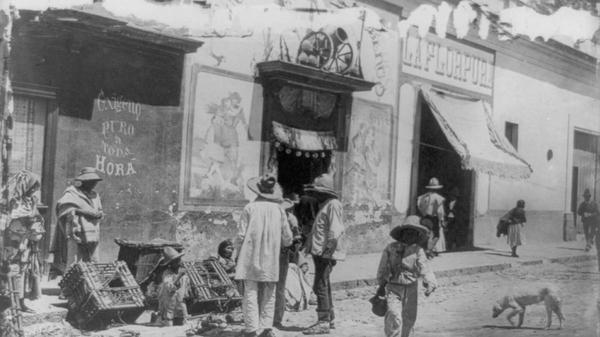The world does not stop moving forward and, with it, the offices of each era are also transformed.Have you wondered how CDMX families lived centuries?What did people do to subsist?Today we tell you the history of Chilangas lunch, women whose culinary heritage was recorded in more than one chronicle.
Look here: 5 textile designs of indigenous communities that fill us with pride
Who were Chilangas lunch?
To understand the origins of this trade, we have to make a leap to the past until we reach, as the song says, in the 1600s. During that time, many indigenous women sold pulque in the central area of the country;These products generally came from their own crops that gave them enough means to subsist.
However, this source of income was threatened when colonial authorities prohibited the sale of this drink in squares and streets, since they considered that a good part of the population worked under its effects.With this in mind, they finally decided to formally establish the establishments of the pulquerías.
In this way, indigenous women and other people with limited resources were unable to continue selling pulque in the traditional way.Therefore, they settled around the new pulquerías and began offering visitors food and a little pulque to accompany the dishes.
You may be interested: Japanese neighborhood on CDMX?This is the history of your community

Thus formally arose the office of lunch, which constituted a good option for women and their customers;According to UNAM historians, lunchments quickly popularized due to their economic accessibility for all audiences:
"These vendors could never compete with the pulquerías, but they meant an alternative of access to the drink for all those who did not have a large pulquería at their disposal or had no means to consume fine pulque daily, such as the one offered in the establishments.".
Food and pulque on lunch shops
Thus, for a modest price, the lunch offers their customers a lunch dish, a slice of bread, an omelet and a jug of half -fourth pulque.This business scheme remained without great transformations over just over a century.
The lunch also used to sell fritas and tamales near the pulquerías, but were independent of such businesses.However, some lunches did used to collaborate directly with pulquerías;Indeed, they sold their pulque produced by indigenous resident women of Xochimilco or Chalco.
When the authorities noticed this situation, they ordered the lunch to move from the streets and corners of the city, to the squares and squares.Subsequently, seeing that the collaboration between pulquerías and lunchments continued in the same way, they decided to take new measures.
Czech too: Pásele, March: Create map of all tianguis in CDMX
This was how in 1784, the installation of lunch together was prohibited less than two blocks away from the 45 authorized pulquerías.However, lunch women protested against this measure and, in 1806, managed to obtain permission to sell pulque.
Popularity of lunch together in the capital
These street stalls were extremely popular in the city, not only for the sale of pulque at an accessible price, but for the old custom of eating a lunch.
Indeed, people of all social classes used to pause their daily activities at noon to eat their food.Since many times their workplace was a lot from their homes (as still happens today), they could not return there to take their lunch, so they frequently went to lunch.
Czech this: Tour of the Art Deco colonies on CDMX
Little by little, the lunch shops took off their pulquerías spaces and began establishing themselves in other points such as squares and markets;They also offered chicken or ram broths to their customers, while musical groups approached to interpret sounds with harp, guitar and violin.
His work continued to transform into our capital after the wars of independence and, during the 19th and twentieth centuries, they could still be found on the outskirts of the pulquerías of the CDMX.Progressively, the lunch together gave way to the street stalls that until today we found in the streets Chilangas.
Did you already know this trade?Would you have liked to attend a lunch in all its splendor?If you were interested in this content, do not go without seeing: 6 chilangos trades that no longer exist and you had not noticed.
Without mining or Portezuelo, a company that produces wine is born in Malargüe
Goodbye to Carlos Marín: this is the heritage and fortune left by the singer of Il Divo
Record of women affiliated with Social Security, but temporary and with low salaries
Ceviche to Recoleta and croissants for officials: the bet of the workers of Villa 31 to sell outside the neighborhood